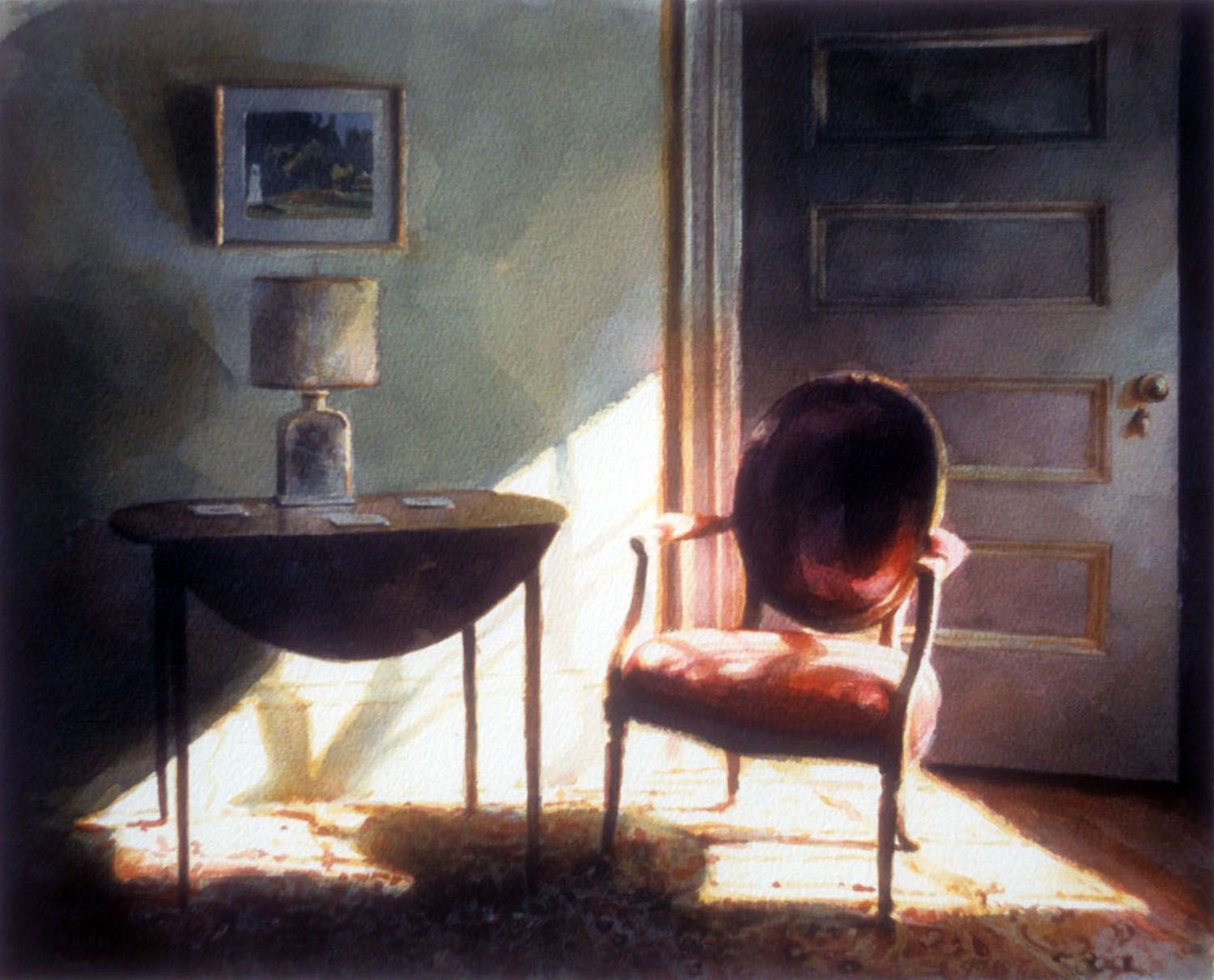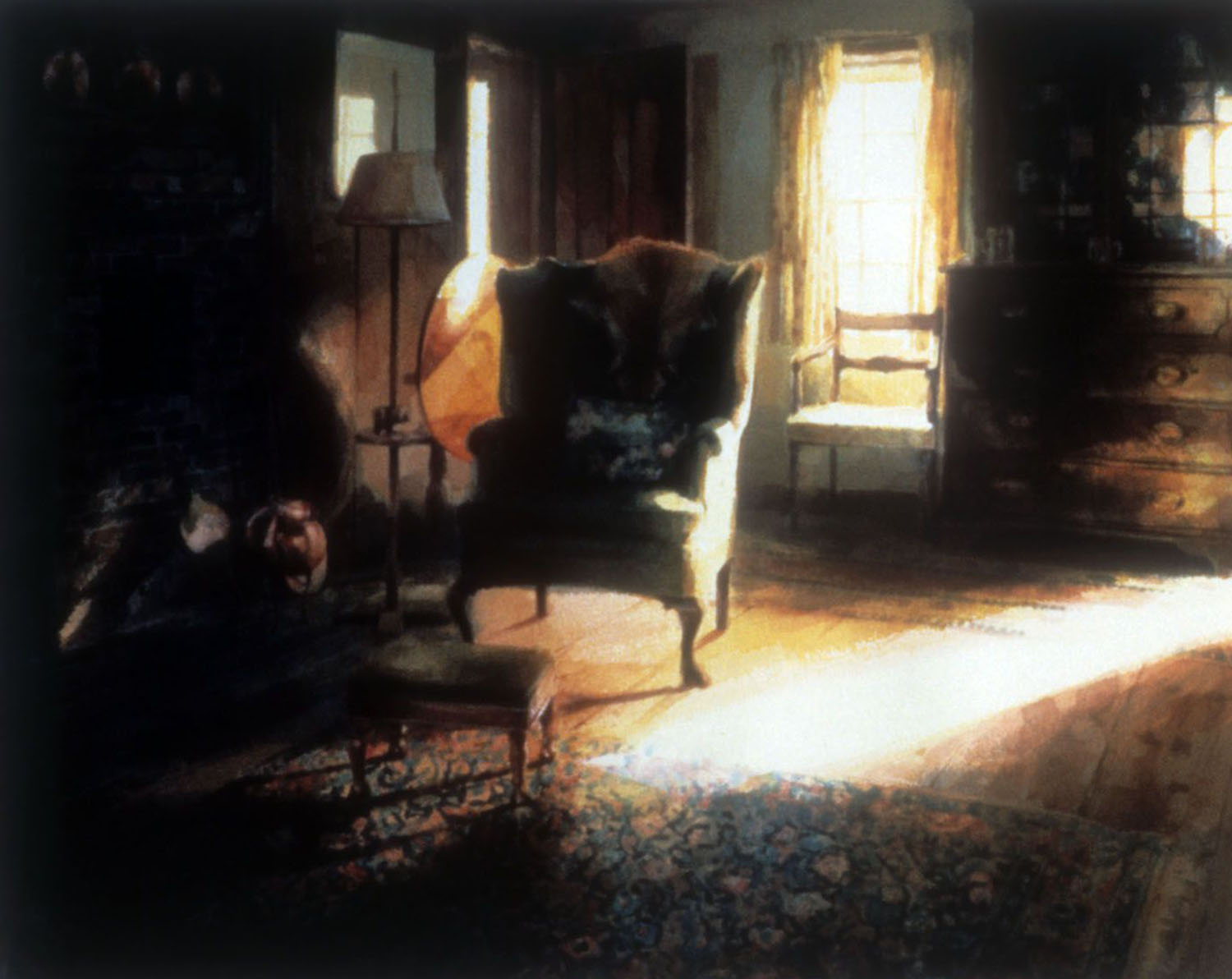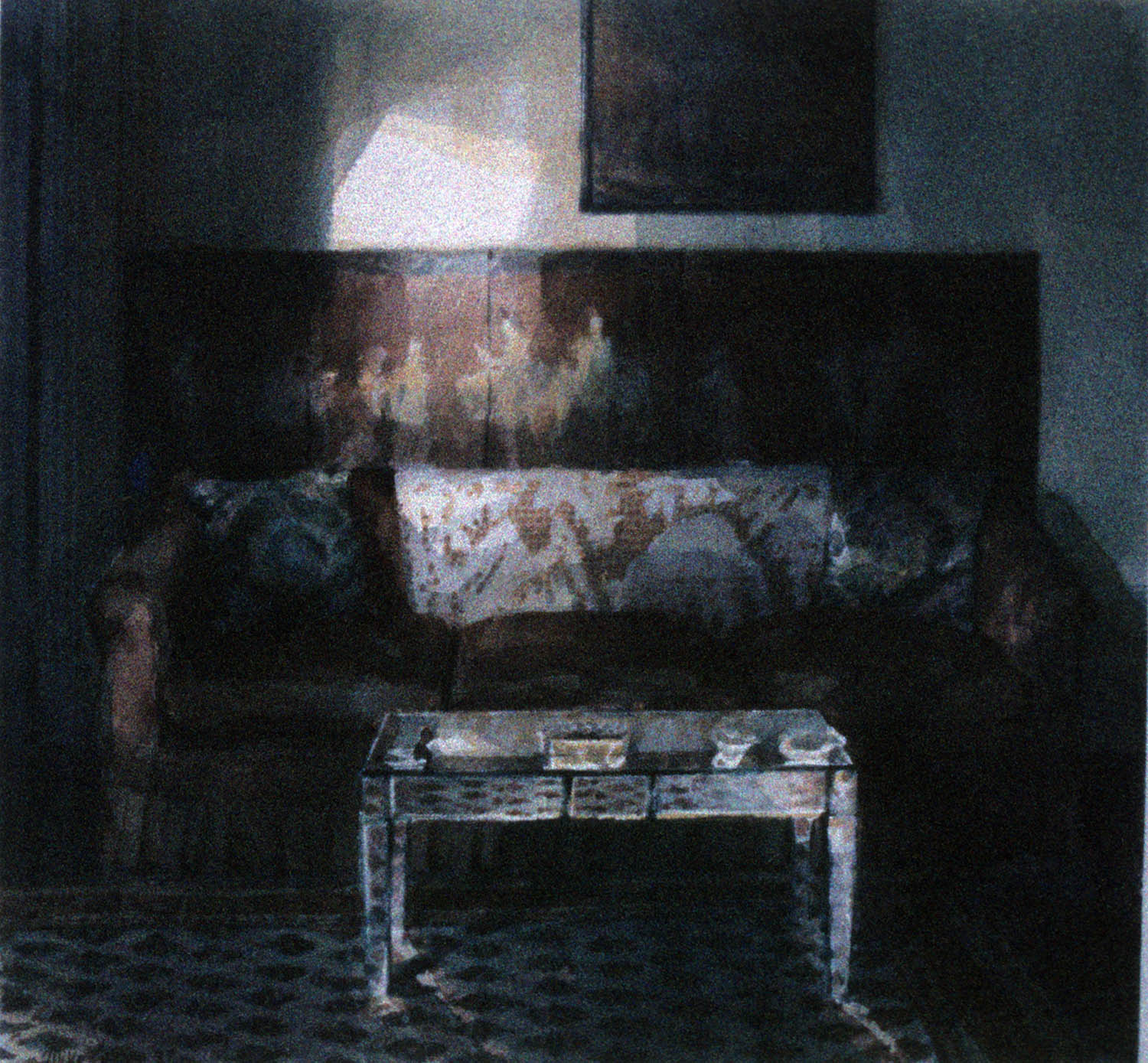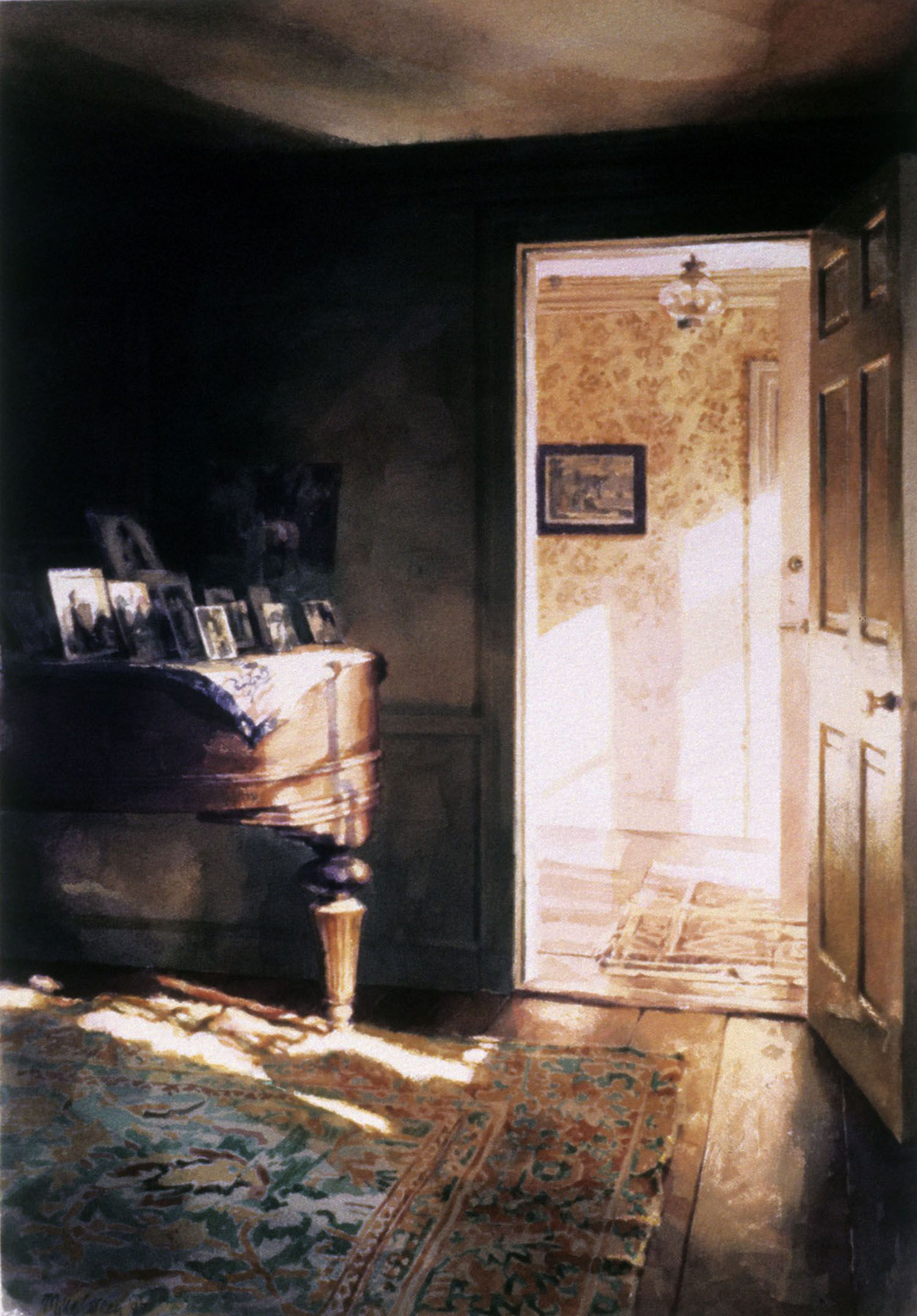Boston Houses | Castle Rock Series | Farmhouse on Route 1.
Press
Boston Herald 1987
Color Mike Green exhibit a smash
By Nancy Stapen
GIVEN THE popularity of all things Australian, the Boston School and the interest in Wyeth-type watercolors, it's not
hard to understand the appeal of Mike Green's current show at the Clark Gallery.
In fact, the entire exhibit sold out in one and a half hours at a private preview, before the show had officially opened.
Green is an accomplished watereolorist from Australia with a particular fondness for abandoned homes. Gypsylike, he
camps out in deserted dwellings to paint their interiors.
The current series has an added twist. Instead of neglected homes. Green painted genteel Brahmin domiciles of such
still-very-much-alive families as the Coolidges and the Beals, in Brookline, Hamilton, Wenham and New Hampshire.
The art market is in a frenzy for Boston School painting (to which Green's deftly painted Interiors must Inevitably be compared),
fueled by the recent exhibition "The Bostonians; Painters of an Elegant Age" at the Museum of Fine Arts.
Those famed huge blue-and white vases that appear in Sargent's quintessential Boston painting — the portrait of the four Boit
sisters (the real vases, along with Sargent's painting, were on view in the Bostonians show) — make an appearance In one of Green's
works, which was painted In the home of their current owner.
The paintings also coincide with the reawakening of interest In Andrew Wyeth. an artist to whom Green bears a definite
relation, both in his work and in media attention.
All that guaranteed crowd pleasing helps, but it doesn't fully explain the lure of Green's works.
Despite the varied locales, Green's output holds a consistent "look." The works are always unabashedly romantic, flooding
brilliant light Into moody interiors permeated with human memories. People never appear In these works, but loneliness is always present.
The poetry of Green's touch lies In a meeting of the human presence (embodied in the things people use and the rooms
they live In) and transformative nature, represented by light. The hushed darkness of these rooms, with their wealth
of secrets, is penetrated and changed by light. Snaking from blazing windows onto walls and objects, light alters color, texture
and reflection. Plush settees, Persian rugs and polished wood are Infused with an almost spiritual quality.
Radiant warm light juxtaposed with darkened harmonious interiors recalls Vermeer (and the Old Master influenced Boston School
painters), but Green uses light as a pure, abstract force. Thus, in "Lounge Room" (1987), a bisected thrust of window light fragments
carpets, chairs and tables into complex geometric patterns, which coexist with the "reality" of softly rounded, overstaffed chairs.
The chair is Green's primary symbol. Assuming a decidedly human presence, chairs may open their arms to the viewer,
or turn away, or hold a "conversation" among themselves. Imprinted with the human body, they affirm its paradoxical absence.
In the same way, the paintings invite the viewer into their magical space, while asserting its uninhabited nature.
Despite his mastery of watercolor. Green's drawing has a tentative quality. The charm breaks down when viewed too close.
Nevertheless, the haunting beauty of Green' s interiors moves beyond merely pretty pictures. These are images that stick in the mind.














